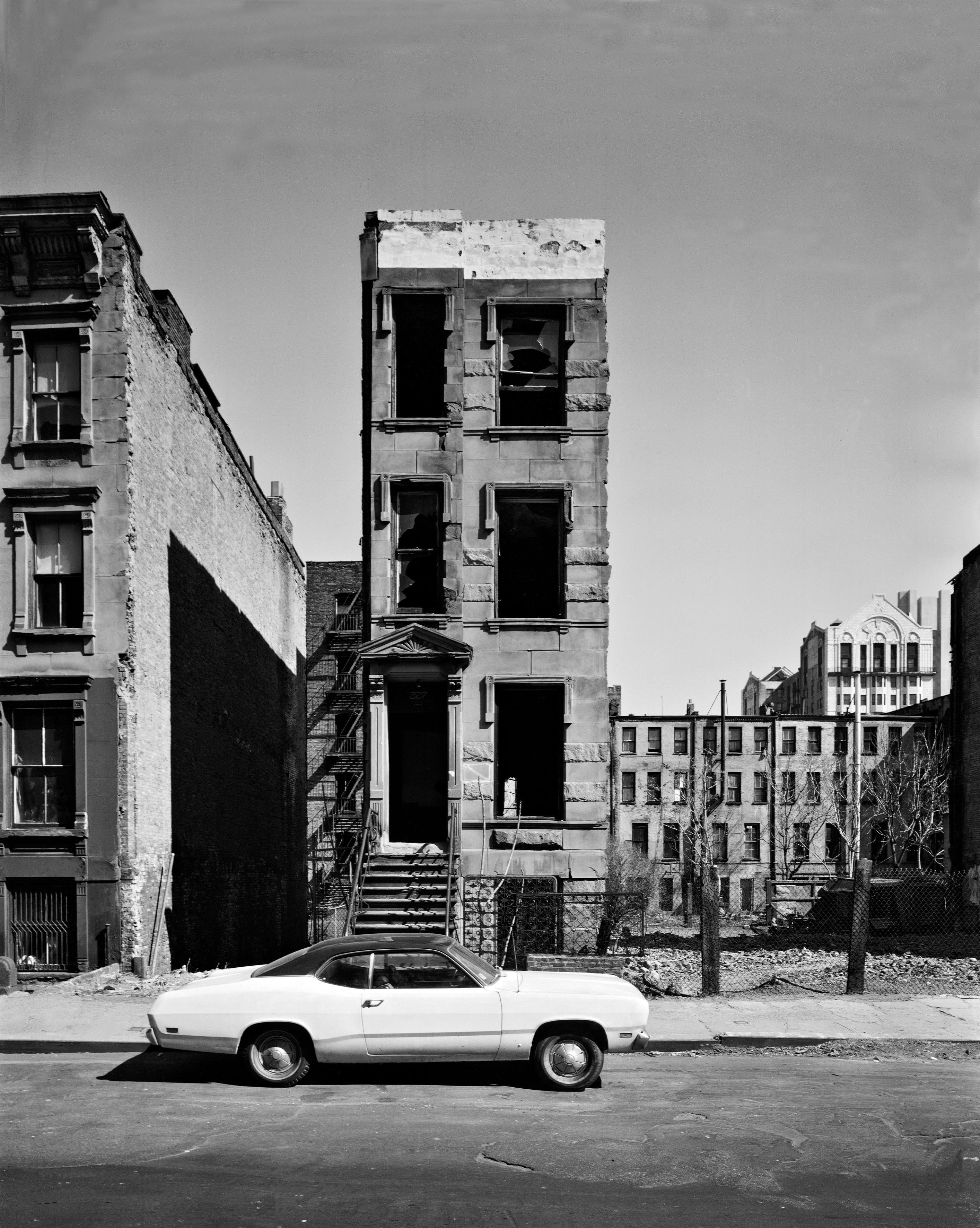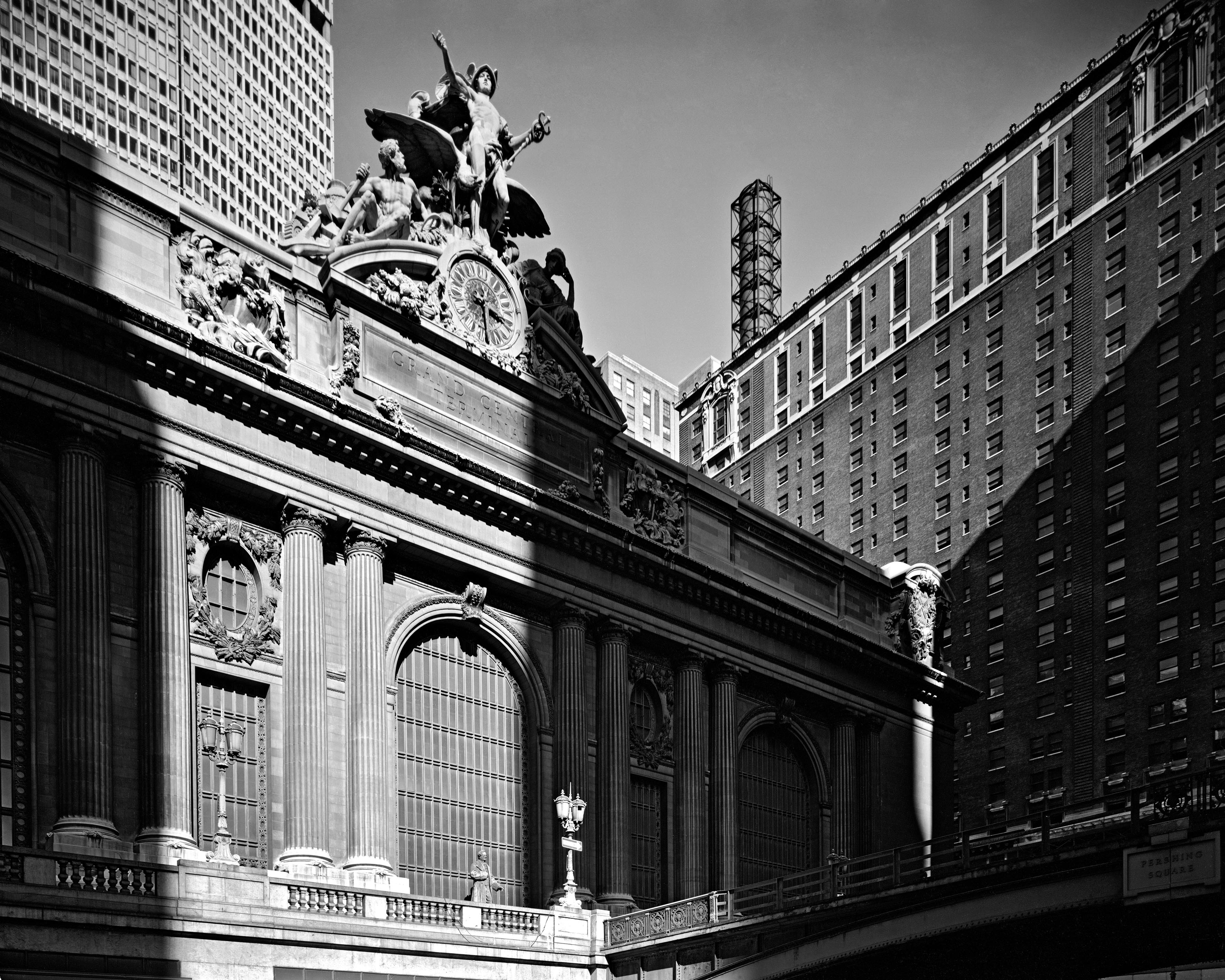Striking snapshots of 1970’s New York
- Text by Miss Rosen
- Photography by Philip Trager

In 1970, Daniel Patrick Moynihan convinced the Nixon White House to support a policy of “benign neglect,” wherein basic government services were systemically denied to cities across the United States with large African-American and Latinx populations.
New York City quickly became the nation’s most famous victim of “urban blight” at the hands of the state. The city teetered on the edge of bankruptcy as manufacturers fled en masse, while landlords hired arsonists to torch their buildings knowing they could get more money from insurance than they could from resale. The city fell into desolate and desperate straits. Yet within this horrific landscape, New York maintained its dignity and strength, becoming the site for the most explosive cultural movements of the late 20th century.
The city’s landmark buildings and dramatic vistas were a symbol of the potent energy that lay within, a vision that spoke to American photographer Philip Trager. He and his wife Ina packed a view camera and two tripods into their Jeep Commando and drove into Manhattan from Connecticut, where they lived at the time.

From the New York Life Insurance Building, 1978.
Carefully scouting out locations that spoke of the city’s complex, dynamic, and varied architecture, Trager created a striking portrait of the city by photographing some its most historic landmarks and views, from a close up of the Cathedral Church of St. John the Divine to the World Trade Towers as seen from half a mile away.
“When you photograph intensely in a city you begin to feel as if you are a part of it. In a way, the streets get into your heart and head,” Trager tells Huck. “I selected subjects intuitively, choosing buildings and viewpoints that ‘felt right’ viscerally. I did not intend to make a documentary or historical survey, although as the decades have passed the photographs have taken on a documentary aspect.”
The photographs have been collected in New York in the 1970s (Steidl), which features works made from negatives that had been forgotten while Trager was working on his first book in 1980. Taken as a whole, the new book brings us back to a turning point in the city’s history, a time of gutsy glamour just before everything changed.

Gordon’s gin, 1978.
Trager’s sensitivity to the city is evident in every photograph. “I generally would take the light ‘as it came’ but if it was especially bad I would return another time. The light in Manhattan’s streets is often challenging especially in the winter when there are only very short slivers of light in the narrow streets; a slender window of opportunity,” he reveals.
In retrospect, the photographs have taken on new life, becoming records of a world that in many cases no longer exists. “Although New York’s architecture had evolved in the past and I knew that it would change in the future, I didn’t foresee the immense changes that have taken place,” Trager observes.
“Although the city is less gritty now, for me it seems to be not as stimulating visually; less welcoming. Photographs of cities take on a new meaning with the passage of time. I am a little nostalgic for New York in the 1970s.”

West 122nd Street, 1979.

From the Equitable Building, 1978.

Times Square at Duffy Square, 1977.

125 East Eleventh Street, 1978.

Grand Central Terminal, 1978.

One Astor Plaza, 1978
Follow Miss Rosen on Twitter.
Enjoyed this article? Like Huck on Facebook or follow us on Twitter.
You might like

Largest-Ever Display of UK AIDS Memorial Quilt Opens at Tate Modern
Grief Made Visible — Comprising hundreds of panels made by lovers, friends and chosen family, the UK AIDS Memorial Quilt returns in full for the first time since 1994 – a testament to grief, friendship and the ongoing fight against HIV stigma.
Written by: Ella Glossop

In Medellín’s alleys and side streets, football’s founding spirit shines
Street Spirit — Granted two weeks of unfettered access, photographer Tom Ringsby captures the warmth and DIY essence of the Colombian city’s grassroots street football scene.
Written by: Isaac Muk

On Alexander Skarsgård’s trousers, The Rehearsal, and the importance of weirdos
Freaks and Finances — In the May edition of our monthly culture newsletter, columnist Emma Garland reflects on the Swedish actor’s Cannes look, Nathan Fielder’s wild ambition, and Jafaican.
Written by: Emma Garland

Dalia Al-Dujaili: “When you’re placeless, nature can fill the void”
Babylon, Albion — As her new book publishes, the British-Iraqi author speaks about connecting with the land as a second-generation migrant, plants as symbols of resistance, and being proud of her parents.
Written by: Zahra Onsori

Why Katy Perry’s space flight was one giant flop for mankind
Galactic girlbossing — In a widely-panned, 11-minute trip to the edge of the earth’s atmosphere, the ‘Women’s World’ singer joined an all-female space crew in an expensive vanity advert for Jeff Bezos’ Blue Origin. Newsletter columnist Emma Garland explains its apocalypse indicating signs.
Written by: Emma Garland

We are all Mia Khalifa
How humour, therapy and community help Huck's latest cover star control her narrative.
Written by: Alya Mooro

